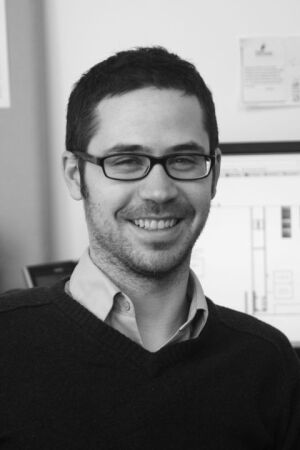by
Brendon Nafziger, DOTmed News Associate Editor | January 01, 2012
From the January 2012 issue of HealthCare Business News magazine
4 things you (might have) missed at RSNA 2011
The Radiological Society of North America’s annual meeting in Chicago is the industry’s biggest show. Unfortunately, it also kicks off during Thanksgiving weekend. But if you couldn’t make it this year, have no fear: DOTmed News was on hand, and we’ve compiled a list of some of the products and trends that piqued our interest from the floor.
1. Magnetic particle imaging
Originally developed by two Philips scientists in Germany almost 10 years ago, Magnetic Particle Imaging is one of the first truly new modalities to come along in a while. The experimental technique involves injecting patients with iron oxide nano-particles, which are visible to a magnetic scanner. The resulting images could allow doctors to gauge the health of arteries, gain simultaneous structural and functional information of the heart and - if an oral solution is developed - scan the gut for lesions. However, the technology is still years away from the clinic: it’s only in the proof-of-concept phase now. (No device was on hand at the show.) However, Bruker Bio-Spin could launch a pre-clinical version for animals this year.
2. Brave new world of neuroimaging
This year’s RSNA theme was “Celebrate the Image,” but it could have been “Year of the Brain.” A lot of presentations and technologies focused on imaging’s role in understanding neurological disorders. For instance, Siemens’ upcoming PET-CT scanner, the Biograph mCT, has software to work with Eli Lilly’s Amyvid, an imaging agent that might help doctors better treat Alzheimer’s disease patients, should it get approved by the Food and Drug Administration this year. The drug can help detect amyloid plaque deposits in the living brain. While it likely wouldn’t be indicated to “diagnose” Alzheimer’s, it might help doctors rule out other forms of dementia. (Note: the Biograph mCT is also not FDA-cleared.)
3. Rise of India as a force in radiology
India has long been known as a hub for teleradiology, but an RSNA presentation showed how doctors in the world’s second most populous country are also on the cutting-edge of research, investigating new hybrid systems like PET-MR, and pioneering prostate cancer treatments with MR-guided high focus ultrasound.
4. Watson: a doctor's new best friend?
“Smart” technologies are coming to radiology to help with workflow. In a talk at the show, Nuance Communications CMIO, Dr. Nick van Terheyden, discussed how IBM’s famous Jeopardy-playing computer, Watson, could help radiologists. His company, whose technology is licensed for Siri, has itself licensed IBM’s Watson tech for radiology. It’s still probably at least one and a half to two years away from any kind of commercial program, but the idea is to create an intelligent tool that could act as the “radiologist’s buddy,” reading reports in real-time and giving feedback and advice, drawn from all the publicly available information poured into its silicon brain. It could go something like this: a radiologist reading a scan discovers an incidentaloma - an incidental finding unrelated to what’s being checked. The Watson-in-radiology program could scan its vast library of clinical evidence, then bring up a note reminding the radiologist that, in patients of the type being seen, incidentalomas are typically harmless, possibly adding links to citations in case the doctor wants to dig deeper.
See anything you thought was groundbreaking? Notice a trend you think is shaping the industry? Write to me at
brendon@dotmed.com and let me know.
